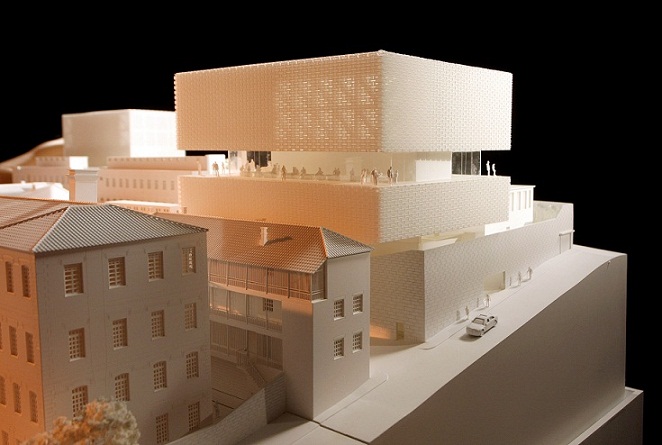Reviews & Articles
Central Police Station
John BATTEN
at 0:00am on 16th July 2012

(原文以英文發表,題為《中區警署》。)
The intimacy between government officials and appointees who sit on statutory advisory boards was emphasized last week with the resignation of Bernard Chan, the chairman of the Antiquities Advisory Board. Acknowledging his relationship with government officials may give the impression of lacking independence; Chan resigned his position to allow the Board to be perceived as free of government interference. *
Chan’s undoing was government’s fear of transparency. The government announced in 2009 that the Central Government Offices’ West Wing would be demolished to supposedly ease a shortage of Grade-A office space in Central. Immediately, conservation and architectural professional groups argued that the ensemble of three 1950s modernist Central Government Office buildings on Government Hill, Hong Kong’s original site of governance since 1841 is of irreplaceable importance. A recently commissioned Heritage Impact Assessment on the retained CGO buildings, the Main and East Wings, was tabled at the last Antiquities Advisory Board meeting, but it failed to consider the integral relationship between all three buildings and ignored assessing the architectural characteristics of the West Wing.
This is almost déjà-vu. In 2008 the Hong Kong Jockey Club unveiled a plan for a huge "bamboo" tower to be erected on the back exercise courtyard of the former Central Police Station complex as part of its "revitalization". It was revealed that Jockey Club officials had been in secret discussions with the government for two years prior to unveiling their plans for the site. Local residents condemned the bulkiness of the new structure and conservationists deplored the plan’s lack of emphasis on the heritage features of the historic site. The plan was duly scrapped after public consultation.
It was this lack of transparency that allowed an untenable plan to progress beyond an embryonic idea. The Jockey Club then ordered what should have been its starting point: a heritage assessment of the site. It then envisioned the future Central Police Station complex to have a contemporary art and heritage focus, complimented by shops and restaurants at the Hollywood Road end of the site.
The site is currently undergoing an extensive archeological survey and site preparation prior to renovation and construction of two new buildings, fronting Arbuthnot Road and Old Bailey Street.
However, the biggest unresolved issue facing the project is its future funding and governance. The Jockey Club will provide HK$1.2 billion to complete the site’s renovation, but continuing funding will come from income generated and charity fund-raising. The original management plan was to set up a new, independent non-profit company with a governing board, who would oversee professional staff to manage the facilities and arts and heritage programming. Instead, the Jockey Club, on the advice of the ICAC, will now tender for an existing organisation to manage the site.
Only a handful of existing arts groups are capable to operate the Central Police Station complex – and dominated by a small circle of people. To ensure that the complex is operated in a liberal and enlightened way the Jockey Club should abandon this approach and be pressed to set-up a new, unencumbered governance and endowment structure to allow this arts and heritage facility to reach its exciting potential - and free of accusations of official, non-transparent, intimacy.
* A version of this opinion piece was published in the South China Morning Post on 25 June 2012. The following week, Bernard Chan withdrew his resignation and agreed to remain Chairman of the Antiquities Advisory Board until the end of 2012. Bernard Chan was also appointed to the Executive Council from 1 July 2012 in Leung Chun-ying’s first government.
